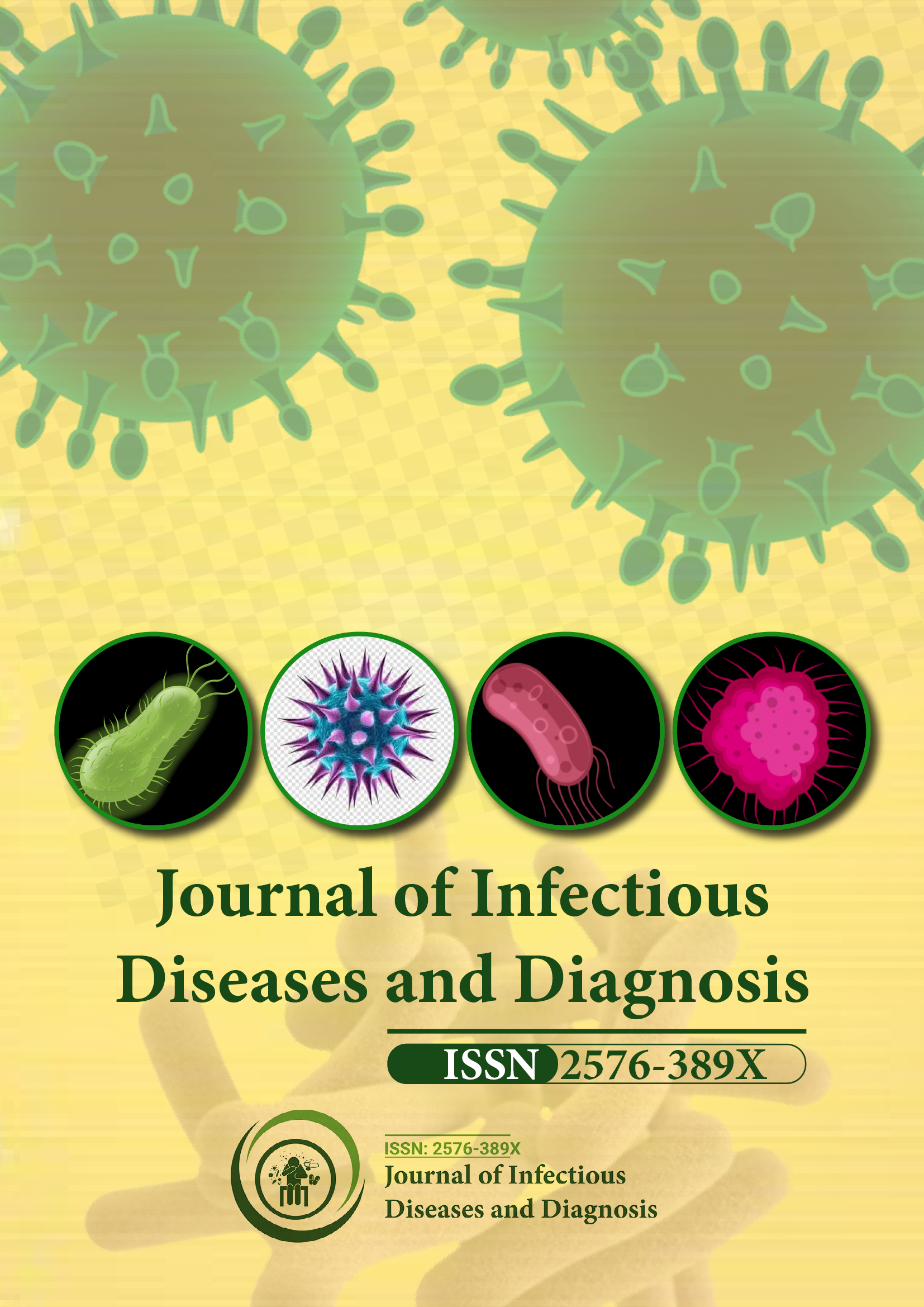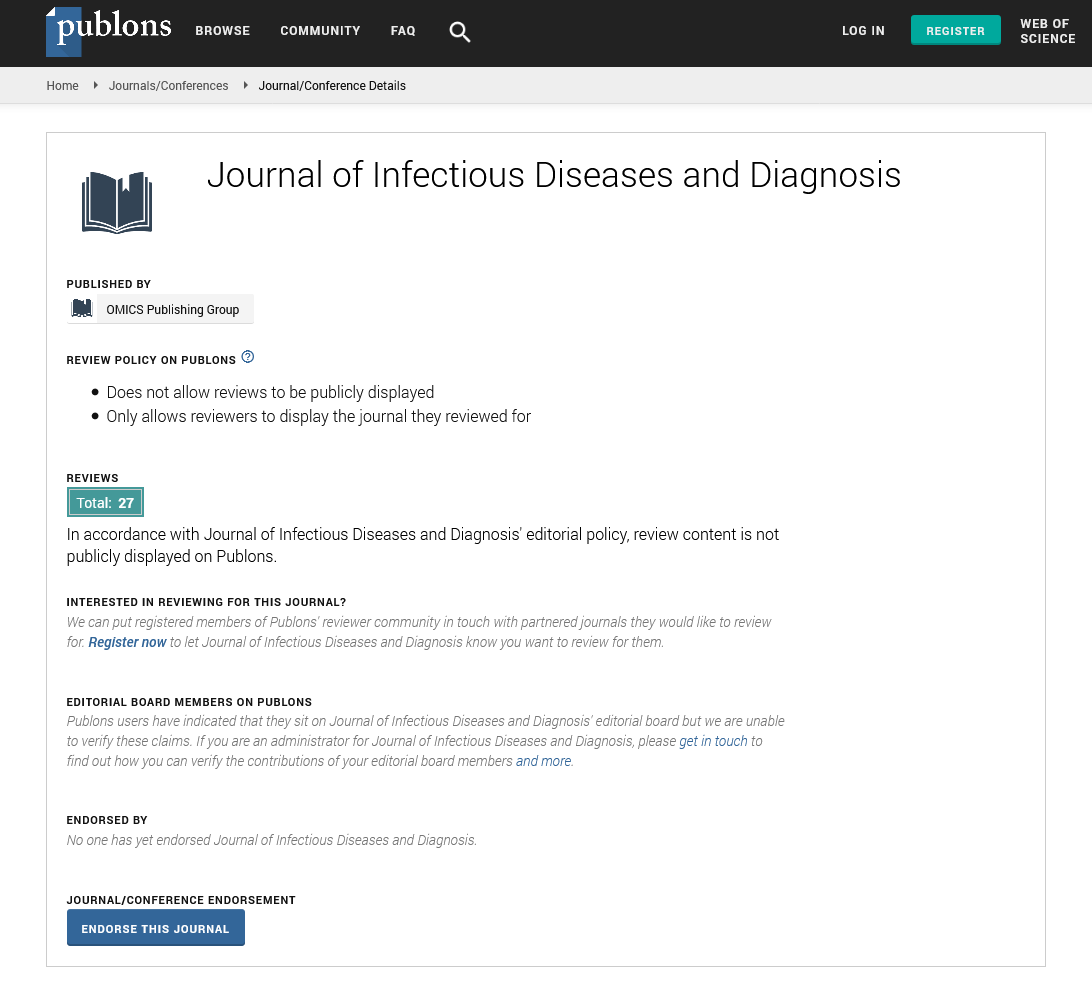Indexed In
- RefSeek
- Hamdard University
- EBSCO A-Z
- Publons
- Euro Pub
- Google Scholar
Useful Links
Share This Page
Journal Flyer

Open Access Journals
- Agri and Aquaculture
- Biochemistry
- Bioinformatics & Systems Biology
- Business & Management
- Chemistry
- Clinical Sciences
- Engineering
- Food & Nutrition
- General Science
- Genetics & Molecular Biology
- Immunology & Microbiology
- Medical Sciences
- Neuroscience & Psychology
- Nursing & Health Care
- Pharmaceutical Sciences
Perspective - (2023) Volume 8, Issue 1
COVID-19 Infection Prevention and Control for Health Care Workers
Cuong Nguyen*Received: 02-Jan-2023, Manuscript No. JIDD-22-19896; Editor assigned: 04-Jan-2023, Pre QC No. JIDD-22-19896 (PQ); Reviewed: 18-Jan-2023, QC No. JIDD-22-19896; Revised: 25-Jan-2023, Manuscript No. JIDD-22-19896 (R); Published: 01-Feb-2023, DOI: 10.35248/2576-389X.23.08.195
About the Study
The COVID-19 pandemic has highlighted the crucial role that healthcare workers play in caring for patients and controlling the spread of disease. However, it has also brought to light the significant risks that healthcare workers face in terms of contracting the virus themselves.
Healthcare worker infections with COVID-19 have been reported worldwide, with the World Health Organization (WHO) estimating that as of September 2020, over 7 million healthcare workers have been infected with COVID-19 globally. This highlights the vulnerability of healthcare workers to the virus, and the importance of protecting them from infection.
One of the main reasons for the high rate of healthcare worker infections is the nature of their work. Healthcare workers are often in close proximity to infected patients, and may be exposed to the virus through contact with contaminated surfaces or droplets released when an infected person talks, coughs, or sneezes. In addition, many healthcare workers are required to work in high-risk settings, such as emergency departments and intensive care units, where the risk of exposure is even higher.
Another factor contributing to the high rate of healthcare worker infections is the lack of Personal Protective Equipment (PPE) in some countries. At the beginning of the pandemic, many countries faced shortages of PPE, and healthcare workers were not always able to access the necessary equipment to protect them from infection. Even now, some countries still facing PPE shortages and the access to PPE is not always guaranteed for the healthcare workers.
The effects of healthcare worker infections can be far-reaching. Not only do infected healthcare workers require time off work to recover, but they may also be unable to return to work due to ongoing health issues related to COVID-19. This can lead to shortages of healthcare workers and increased strain on the healthcare system. In addition, healthcare worker infections can have a significant impact on the mental health and well-being of those affected, as well as their families.
To protect healthcare workers from infection, it is crucial to implement effective infection control measures. This includes providing healthcare workers with appropriate PPE, such as masks, goggles, and gowns, as well as training on the proper use and disposal of PPE. It is also important to implement measures to reduce the risk of transmission within healthcare facilities, such as physical distancing, increased cleaning and disinfection, and testing and quarantine protocols for healthcare workers.
In addition, it is important to support healthcare workers who have been infected with COVID-19, both physically and mentally. This includes providing access to medical care and support, as well as psychological counseling and support.
Conclusion
In conclusion, healthcare worker infections with COVID-19 have been a significant issue during the pandemic. The nature of healthcare work and the lack of PPE in some countries have contributed to the high rate of infections. It is crucial to protect healthcare workers from infection by implementing effective infection control measures, as well as providing support to those who have been infected. The healthcare workers are the frontline fighters of the pandemic and their protection should be a priority for all the governments.
Citation: Nguyen C (2023) COVID-19 Infection Prevention and Control for Health Care Workers. J Infect Dis Diagn. 8:195.
Copyright: © 2023 Nguyen C. This is an open-access article distributed under the terms of the Creative Commons Attribution License, which permits unrestricted use, distribution, and reproduction in any medium, provided the original author and source are credited.

